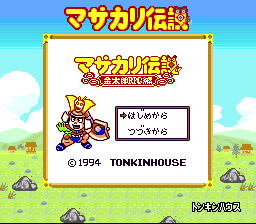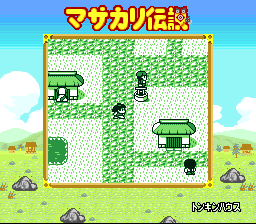I finished Glory of Heracles IV and I will have that post up probably on Sunday. The next game would have been Basted for the PCE but that turned out not to qualify as an ARPG by my standards. Next after that is Startling Odyssey II, but I will only be playing a few hours of that — it’s another DQ2 clone, and my practice has been to not finish those on the PC Engine.
I’ve repeatedly disparaged games as being DQ2 clones, and I used to refer to them as “AMID systems” but I’m not sure I ever fully explained what that really means.
In essence, a DQ2 clone is a game that doesn’t go beyond the system that Dragon Quest II introduced in 1987. You have a fixed party of people with set roles that cannot be changed or modified. The magician character will learn spells at level up but cannot do anything else. In battle, your choices are Attack, Magic, Item, Defend (thus AMID).
Furthermore, these games typically copy one of the worst features of early RPGs. They were based on Wizardry which was based on Dungeons and Dragons, and the result is that magic tends to be very hard to use. The random encounter rate is high, MP fairly low, and MP restoring items either rare or nonexistent. This means that effectively in most fights you are simply mashing attack over and over again, with magic being reserved solely for healing, or sometimes boss fights.
Startling Odyssey II is an example of a straight DQ2 clone, without even basic modifications. It’s more common for there to be some minor, token system modification — maybe you buy spells instead of learning them on level up, or the fighter character has spell-like “techniques”. There might be a front and back row of monsters. But these slight modifications do not change the fact that you are still basically mashing “attack” in every battle.
A DQ2 clone is not necessary a bad game — Glory of Heracles III is an example of a slightly modified DQ2 system that is fun, and you could make the case that Breath of Fire 1 counts as well. Both of these games are saved by the story and/or interesting dungeon design. And games that do not copy DQ2 are not necessary good — Wizap! and Kigurumi Adventure are prime examples.
The worst is when you have the straight (or slightly modified) DQ2 system combined with dull, featureless dungeons, a generic fantasy world, and a boring story.
I’m curious to see how long these kind of games continue. Honestly if you had asked me before I started this blog I would not have thought they were still coming out in late 1994 but now I’m expecting to see them right up to the end.



















